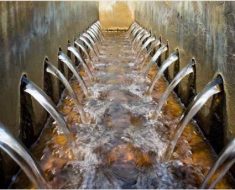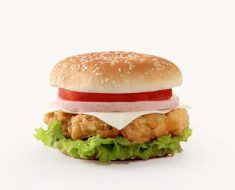Centenarian reveals SURPRISE drink that helps her live longer
We use your sign-up to provide content in ways you’ve consented to and to improve our understanding of you. This may include adverts from us and 3rd parties based on our understanding. You can unsubscribe at any time. More info
Detailed in the Hypertension journal, researchers investigated the effects of a polyphenol-rich red juice on blood pressure readings. There were 56 adults included in the small study. Participants, all over the age of 51, were given a low-calorie cranberry juice beverage, or a colour and calorie-matched placebo drink. For a period of eight weeks, the participants would consume either one of the drinks; blood pressure readings were taken before, during, and after treatment.
The researchers noted: “After eight weeks, diastolic blood pressure was significantly lower for the cranberry juice group compared to the placebo group.”
On average, the cranberry group had a diastolic blood pressure reading of 68.6mmHg at eight weeks.
Meanwhile the placebo group had an average diastolic blood pressure reading of 72.2mmHg at the same interval.
Most significantly, blood pressure readings for the cranberry group were also lowered compared to baseline readings, as well as systolic blood pressure.

To illustrate, diastolic blood pressure readings for the cranberry juice group went from 73.9mmHg at baseline to 68.6mmHg after the eight-week intervention.
Systolic blood pressure in the cranberry juice also decreased from 121.9mmHg at baseline to 118.6mmHg at eight weeks.
“The placebo was associated with no change from baseline,” the researchers added.
“In conclusion, incorporation of a low-calorie cranberry juice beverage into the diet of healthy adults appears to result in improvements in blood pressure.”
Diastolic and systolic blood pressure readings
The Mayo Clinic explained: “Your total blood pressure reading is determined by measuring your systolic and diastolic blood pressures.
“Systolic blood pressure, the top number, measures the force your heart exerts on the walls of your arteries each time it beats.
“Diastolic blood pressure, the bottom number, measures the force your heart exerts on the walls of your arteries in between beats.”
To illustrate, a blood pressure reading of 120/80mmHg showcased the systolic blood pressure (120mmHg) and diastolic blood pressure (80mmHg).

High blood pressure is considered a reading of 140/90mmHg or higher, however the ideal reading is 120/80mmHg and below.
Any reading above 120/80mmHg is classified as “elevated”, “stage one”, or “stage two” high blood pressure.
While the research suggests cranberry juice may lower high blood pressure, there are key ways proven to decrease high readings.
The NHS listed factors that can help to prevent or reduce high blood pressure, such as:
- A healthy diet
- Maintaining a healthy weight
- Taking regular exercise
- Not smoking.

In order to have a healthy diet, one needs to eat plenty of fruits and vegetables.
It is also helpful to minimise your salt intake in any way you can, which may include not adding salt to any of your foods.
“Salt raises your blood pressure. The more salt you eat, the higher your blood pressure,” the NHS explained.
Cutting down on caffeine, limiting consumption to four cups daily, could also help to lower your blood pressure reading, thereby increasing the likelihood of longevity.
Source: Read Full Article





